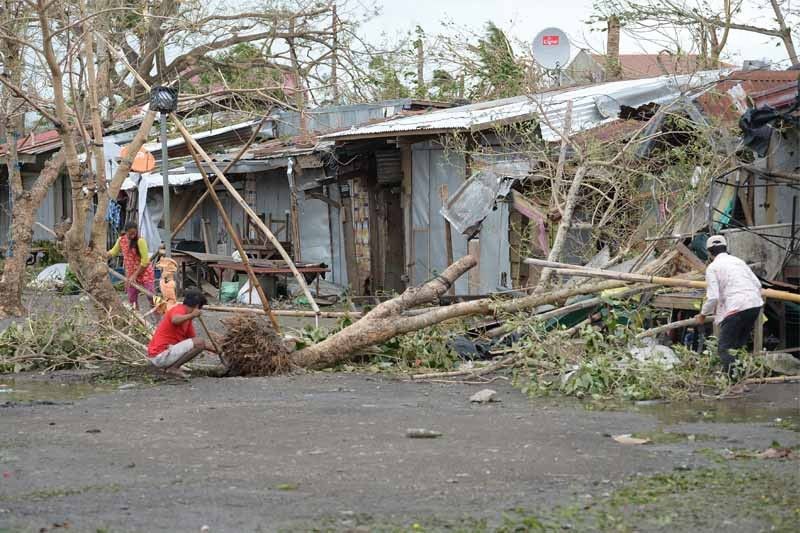'End of the world': terror in the path of Ompong

TUGUEGARAO, Philippines— Bebeth Saquing has seen dozens of storms in her lifetime, but nothing prepared her for the terror of Typhoon Ompong (international name: Mangkhut) as it roared over her Philippines home Saturday packing winds of more than 250 kilometres (155 miles) per hour.
The most powerful storm to hit the region so far this year left a trail of battered homes, landslides and fallen trees in its wake.
At least four people were killed as the typhoon smashed across the rural north of the country, a farming area home to millions.
"It felt like the end of the world... that was stronger than Lawin", said Saquing, 64, referring to a powerful super typhoon which hit the region in 2016.
"I did not sleep," she told AFP by phone from her home on Luzon, which withstood Mangkhut's pounding.
Evidence of the massive storm's passage was everywhere on Saturday.
Wind-struck power poles bent from the ground at odd angles, while uprooted trees blocked roads. Corrugated steel roofs shivered and bounced in the continuing gusts.
Authorities were just beginning their surveys of the damage on Saturday afternoon.
Convoys were heading out on the winding roads of the rural area, which produces a significant portion of the nation's corn and rice.
'Twice as strong'
Fear was widespread among many of the estimated four million people in the storm's path long before it made landfall.
Thousands of people evacuated high-risk areas following major flooding and landslide warnings.
Myrna Parallag and her two young grandchildren fled their home a day before Mangkhut struck.
"I'm afraid that the floodwaters will be high and will reach our house," the 53-year-old told AFP on Friday as she looked for shelter near the city of Tuguegarao.
This was not her first storm. Parallag survived Lawin, also known as Super Typhoon Haima, but it destroyed her house.
"The newscaster said the typhoon now is twice as strong," added Parallag, who makes money selling street food.
Her worries and those of thousands of others were well founded.
The storm claimed its first victims on Saturday, including two women who were buried when a rain-soaked hillside collapsed.
"As we go forward, this number will go higher," said Ricardo Jalad, head of the national civil defence office, referring to the death toll.
An average of 20 typhoons and storms lash the Philippines each year, killing hundreds of people and leaving millions in near-perpetual poverty.
- Latest
- Trending




























